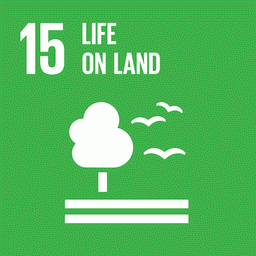Fires in the Amazon, caused by human action, may have affected 95.5% of all known species of plants and vertebrate animals in the biome, reveals a study published by Nature this Wednesday. The research presents evidence on how forest fires affect the biome that holds 10% of the world’s biodiversity.
Forest fires in the Amazon have already affected the habitat of 85.2% of species that are listed as threatened in the region. Non-threatened species had 64% of their habitat impacted by the fires. Almost 190,000 square kilometers of the rainforest burned between 2001 and 2019 – that is the period analyzed by the research.
Of the Amazonian species that are considered threatened by the International Union for Conservation of Nature (IUCN) have now experienced impacts of fire: 236 of the 264 IUCN-listed plant species, 83 of 85 bird species, 53 of 55 mammal species, 5 of 9 reptile species and 95 of 107 amphibian species have experienced fires within their natural territory.
Deforestation leads to large habitat loss, and the fire that comes after it enhances the impact on nature’s resources. “Deforestation is the main villain of the Amazon’s biodiversity, with forest fires right behind it”, explains Paulo Brando, researcher from IPAM (Amazon Environmental Research Institute) and the University of California at Irvine, one of the authors of the study.
This is the first analysis made on the impact of environmental policies against deforestation and fire on the diversity of plants and animals. To reach this conclusion, researchers combined a collection of range maps of Amazonian plant and vertebrate animal species with satellite-detected fires across forested areas in the Amazon during the analyzed period.
“Many species of plants and animals in the Amazon have restricted ranges, which increases the chances of these forest fires causing great losses in biodiversity”, says Brando. The authors of the study emphasize that the data is probably underestimated, as they do not consider other species in the Animal Kingdom or the loss of biodiversity that occurred before 2001, in addition to other factors.
Decisions impact
The study also highlights the influence of environmental policies in the Amazon, dividing the biome’s recent history into three periods: before 2008, when measures to control deforestation were still weak or in the process of effectuation; between 2009 and 2018, when a series of policies to reduce deforestation and fires were implemented with successful results; and 2019, a year in which the spike of burned area in the first eight months coincides with the Brazilian government’s relaxation of environmental policies. “The shift in 2019 represents a gigantic setback in the Amazon conservation; setting a parallel with the automotive industry, it would be as if we had taken off the seatbelts of our cars in the middle of the 21st century”, says Brando.
Even though the area impacted by fire in the Amazon oscillates over time, the emergence of new burned areas per year was not below the average of 3,000 km² since 2001 – notably, the study warns, both the territory and the range of the species affected by fires continued to grow at a steady pace during the observed period. For every new 10,000 km² of burned forest, the researchers calculate that up to 40 more species can be impacted.
“If we reduce Amazon deforestation, we can also reduce the number of forest fires and the associated losses in biodiversity” says Brando. “By losing biodiversity to fire, we lose several ecosystem services; we also lose one of the pillars of the resilience of Amazonian forests.”
